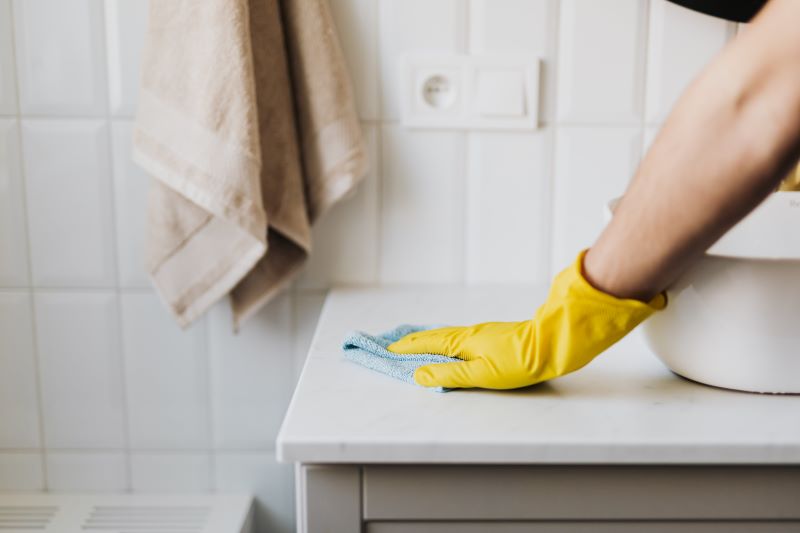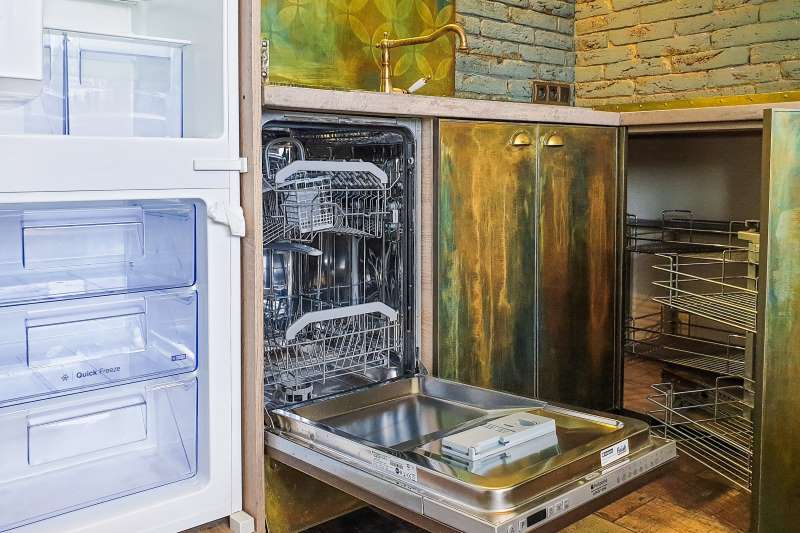It can be inviting to think that your dishwasher gets cleaned every time it completes a cycle. This is unfortunately not the case. While you probably think of your dishwasher as a time-saving appliance that neatly cleans your dirty dishes, you may not be aware that it may also serve as a sanctuary for mold and bacteria.
Mold thrives in moist environments, therefore the ideal circumstances for mold growth are those in which there is no air circulation, a lot of moisture present, and a food source nearby. This food source might be anything left in the dryer to dishwasher particles. Here’s how to clean a mold in a dishwasher.
Why Does the Dishwasher Grow Mold?

Molds come in a wide variety of varieties, each with unique characteristics and preferences. Heat, moisture, organic material, and darkness are the only basic circumstances needed for the development and growth of microbes like bacteria and mold (fungus). Some will develop around food remains, while others stick to the rubber dishwasher parts or the drain seal.
Mold is capable of surviving the complete dishwasher cycle, including all detergents and heated temperatures. Also, the majority of dishwashing detergents contain salt, a food source for yeasts and black mold.
Steps on How to Clean Mold in a Dishwasher

Mold might cause major concerns about the physical condition of your property as well as the possibility of health issues that mold may develop.
Luckily, you can remove even the most difficult mold stains and prevent them from returning with a little patience and some affordable cleaning tools. Here’s the secret on how to clean mold in a dishwasher:
- Empty the dishwasher and remove any silverware trays or baskets.
- Hand-wash the baskets and trays in warm, soapy water, then put them aside to dry.
- Use a bottle brush or toothbrush to thoroughly clean the dishwasher, and also clean the rubber and plastic parts.
- Clean the drain opening and the door’s seal, make sure to fold the door back to clean its underside as well.
- Scrub the mold using a sponge up and down the sidewalls.
- Return the utensil tray and racks to the dishwasher.
- Place a small bowl or measuring cup that is dishwasher-safe upright on the top rack of the dishwasher and fill it with two cups of vinegar.
- Run the wash on the highest heat setting for the entire cycle.
- The dishwasher’s floor should be sprinkled with a cup of baking soda, and then run a second full wash cycle on the highest heat setting. Baking soda destroys any mold spores that the vinegar might have missed.
- Disinfect the dishwasher.
- Run a third full wash cycle on the highest heat setting.
Tips for Disinfecting Your Dishwasher
The most important step to take after cleaning your dishwasher is sanitizing and disinfection. Instead of using harsh chemicals, there are plenty of ways you could use to achieve this. You can use a commercial dishwasher cleaner but you can use a less harsh and most likely used disinfectant product: vinegar and baking soda. Wear PPE while disinfecting to protect yourself.
White Vinegar
Any remaining mold in your dishwasher can be easily removed with vinegar. Empty the dishwasher and simply place a dishwasher-safe container on the top rack of your dishwasher. Close the door, add a full cup of white vinegar, and then run one regular wash cycle at the highest heat setting.
Baking Soda
Baking soda is another disinfectant that can be used to clean a moldy dishwasher. Your empty dishwasher’s bottom dish rack should be sprinkled with one cup of baking soda before you close the door. This technique just requires one short cycle, so make sure to use a hot water cycle.
Lemon Juice
Lemon juice can be effective in eliminating any remaining molds and contaminants on your dishwasher’s parts and also leaves a reviving citrus scent. Simply pour lemon juice into a small dishwasher-safe container, then set it on the dishwasher’s bottom. Run a regular cycle.
Bleach
You might try using bleach to clean it, but be careful as bleach may damage some dishwasher parts. Never combine chlorine bleach with other chemicals as it will create harmful fumes.
Interiors made of stainless steel shouldn’t be cleaned with bleach as it can remove the color and lead to much more permanent damage.
Tips to Prevent Mold Growth in a Dishwasher

A dishwasher’s moist environment is responsible for creating the perfect environment for mold growth. Therefore, it’s essential to take action to stop the mold growth. The following are some tips to help prevent mold growth:
- Run your dishwasher frequently.
- Always keep it clean; remove any standing water both at the end of each cycle and during regular maintenance. If your dishwasher still smells musty after cleaning, this is likely due to moisture inside.
- Regularly check the dishwasher filter for leftovers and other substances.
- When not in use, leave the dishwasher door slightly open for ventilation and to keep the inside surfaces dry.
- If your kitchen sink has a garbage disposal, make sure to run it and clear the drain before turning on your dishwasher because most dishwashers share a drain with the kitchen sink.
- Replace any rubber parts, filters, or removable components like baskets that you feel may have mold on them and follow the previous cleaning and disinfecting recommendations. Use the dishwasher only after completely cleaning, disinfecting, and replacing or repairing any broken parts.
- Clean your dishwasher completely at least once a month.
Summary
Your dishwasher could also grow mold due to its moist environment. If you don’t remove the mold, it can harm your health. If the mold is not hazardous and its damage is minimal, you should clean it up or get rid of it. However, if there is larger damage or hazardous mold contact a mold remediation professional immediately. Your dishes will be cleaner and your dishwasher will last longer than ever if you regularly give it a good cleaning.
When everything is finished, you can give yourself a break and enjoy your sparkling, spotless, mold-free, and fragrant dishwasher. If you won’t be using the dishwasher for many days, wipe out any moist places to prevent mold from returning.


